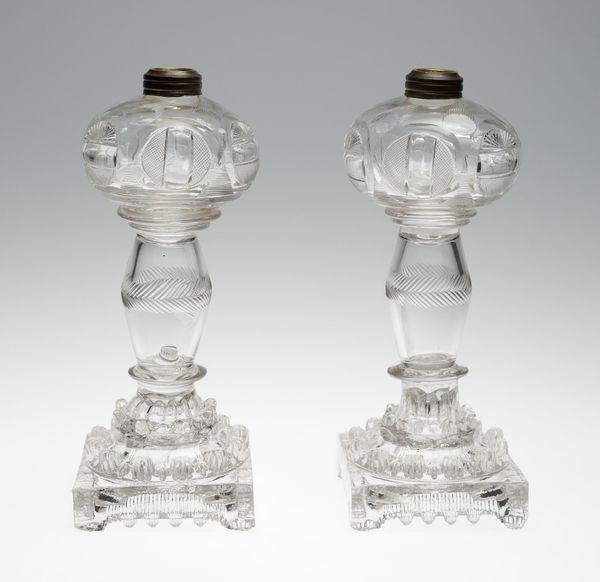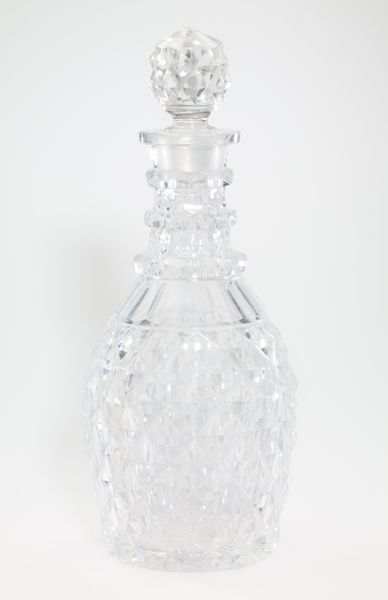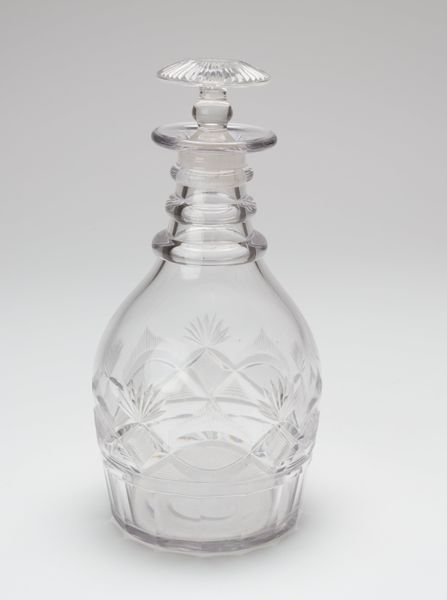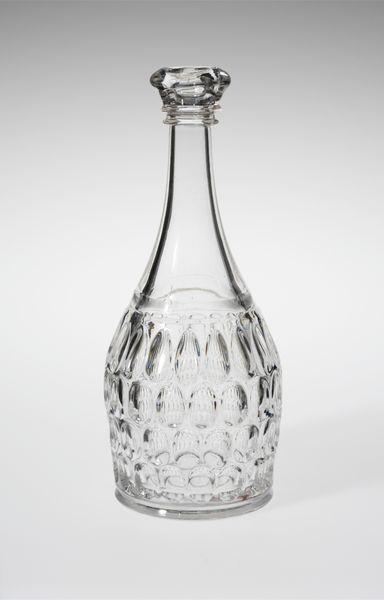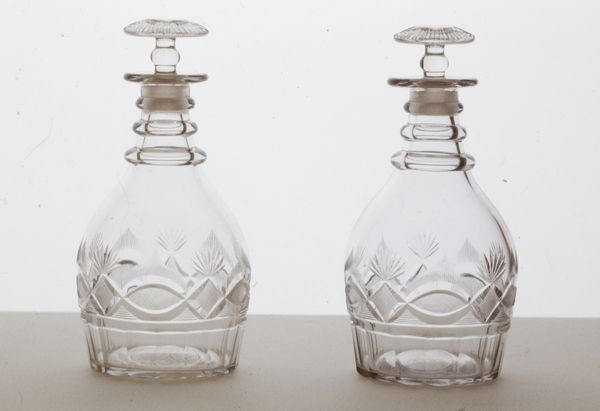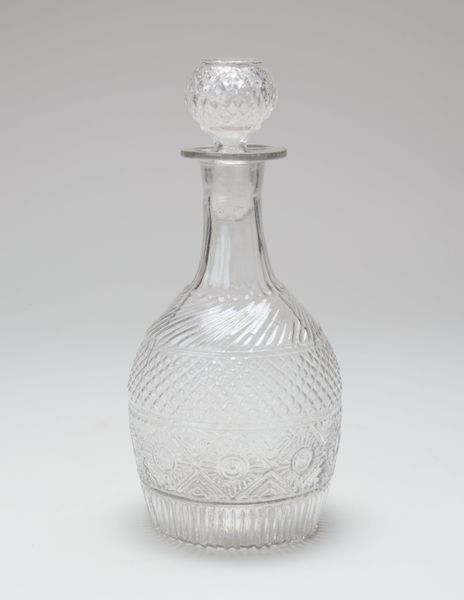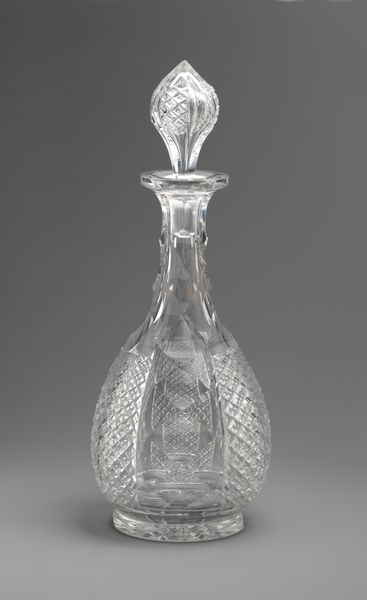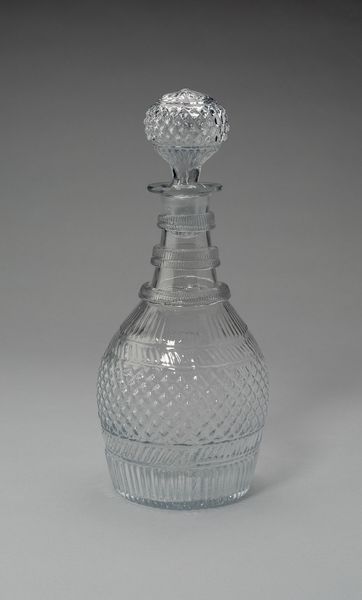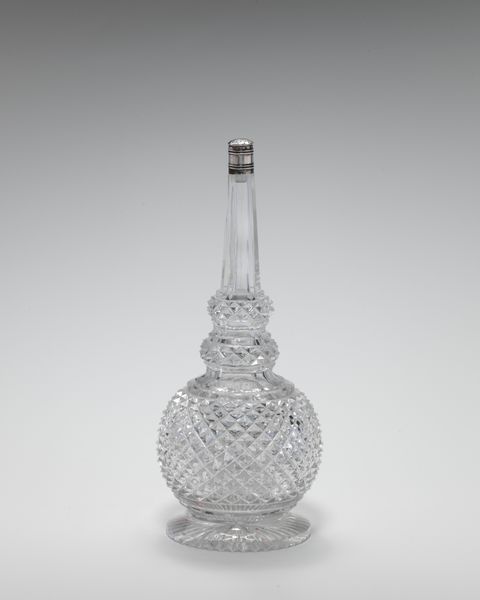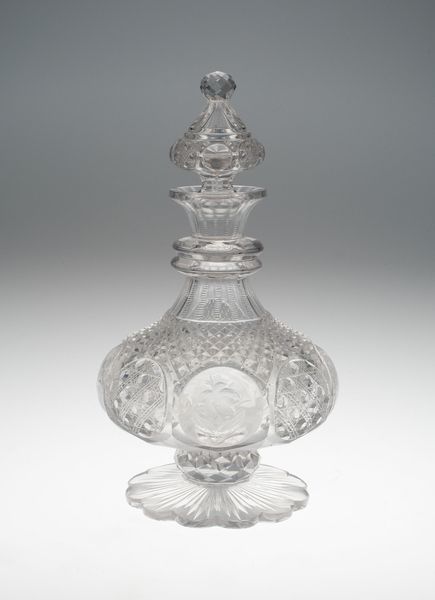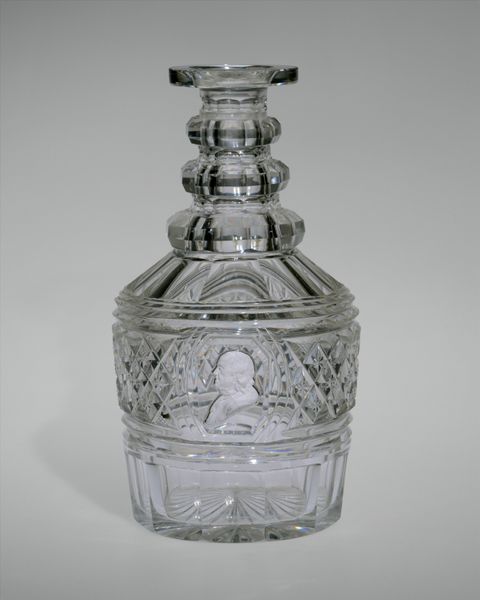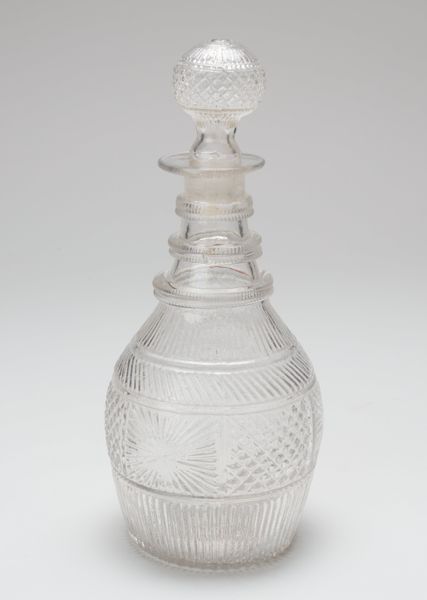
glass
#
glass
#
decorative-art
Dimensions: 10 1/2 x 4 3/8 in. (26.7 x 11.11 cm)
Copyright: Public Domain
Editor: Here we have a pair of glass "Decanters with Stoppers," created around 1810 by Vonèche Glassworks. The cut glass gives them a dazzling effect, almost like enormous diamonds. How should we interpret the display of wealth and refinement they represent? Curator: Precisely! These aren't just pretty objects; they're embodiments of social structures. Consider the era: early 19th century. Who could afford such intricate, handcrafted items? Certainly not the working class. Editor: Right, these would’ve been in the homes of the wealthy. What does their presence say about power and privilege? Curator: Everything. These decanters speak volumes about leisure, consumption, and access to skilled labor. Glassblowing was, and still is, an intensive process, often relying on exploited labor forces. Even the way light refracts through the glass could be seen as a metaphor for how privilege distorts perception. Think about how decorative objects, especially then, affirmed social hierarchies. Editor: That's a really powerful way to look at it. It's easy to just see the beauty without considering the broader context. Curator: Absolutely! It's crucial to challenge the romanticized view of the past and examine whose stories are often left untold. How can we use these objects as prompts to question social inequities? Editor: So instead of just appreciating the craftsmanship, we can ask who benefited from that craftsmanship and who might have been exploited. It's more about interrogating history than admiring an object in isolation. Curator: Exactly. These decanters, sparkling as they are, reflect a complex history of social and economic disparities. Let’s use our knowledge to open up critical dialogues! Editor: Definitely something to reflect on. It’s helped me think about decorative arts in an entirely different light.
Comments
No comments
Be the first to comment and join the conversation on the ultimate creative platform.
